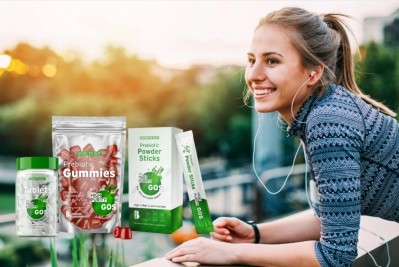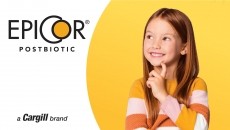Gold standard: Infant formula that mimics mother’s milk promotes bone and digestive health – Junlebao

The lipid structure Oleic-Palmitic-Oleic (OPO) can replicate benefits of breastfeeding, according to an ongoing randomised controlled trial (RCT) by dairy group Junlebao.
“While we provide infant formula, we’re using mother’s milk as the benchmark,” said Celia Ning, director of Junlebao Dairy Group, referencing the fact that breast milk is considered the gold standard for infant nutrition.
Ning was speaking at our Growth Asia Summit 2024 that was held in Singapore from 16 to 18 July.
Triglyceride is a major component of human milk fat. One of the main differences between breast milk and traditional cow formula is the positioning of the fatty acids, especially palmitic acid, along the glycerol backbone of the triglyceride structure.
In breast milk, palmitic acid is usually attached to the middle position – also known as the SN2 position – in the glycerol backbone.
About 51-88% of the palmitic acid in breast milk are positioned at the SN2 position, and only 10-20% are located at the SN2 position in regular cow formula.
Adding OPO to infant formula could make a difference as it mimics the fat structure in human breast milk, where 60-75% of the palmitic acid are at the SN2 position. This unique structure allows babies to absorb more nutrients.
“Clinical evidence has shown that adding infant formula with high SN2 to the diet can promote calcium absorption and increase bone mineral content. Additionally, in a Bunge-Junlebao joint study, casein phosphopeptides (CPP) is shown to enhance the absorption of mineral calcium, iron, and zinc,” said Ning.
The synergistic effect of high sn-2/OPO and CPP enhanced the absorption of minerals, especially calcium, in the Bunge-Junlebao study, which assesses the effects of Junlebao’s Zhizhen infant formula among 180 healthy term infants.
For every 100 g of Zhizhen formula, there are 107 mg CPP. The formula also has Human Milk Oligosaccharides (HMOs) and is an A2 formula, making it easier for digestion compared to regular cow milk, which contains A1 beta-casein.
Zhizhen also contains the firm’s patented probiotic strain Lacticaseibacillus paracasei (N1115), which, according to Ning, is isolated from fermented milk products that has potential probiotic properties such as promoting intestinal health and improving immunity.
The benefits of OPO+CPP
Researchers in China conducted a double-blind RCT, in which 180 infants between one to five months old from a Zhejiang community hospital were observed for 21 weeks. They were equally divided into three groups: A2 (OPO+CPP), Control (Non-OPO+CPP), and Breastfeeding.
The A2 group took Zhizhen formula, and the Control group took Junlebao Lechun formula. To assess the efficacy of Zhizhen formula in replicating the benefits of mother’s milk, the Breastfeeding group was included in this study.
Infant growth, tolerance, stool consistency and bone strength were assessed at five points throughout the study: Days 30, 60, 90, 120, and 150. The study was completed in 16 weeks before the introduction of weaning food.
The A2 group babies were taller in height on days 90, 120, and 150 days compared to the control group – for example, on day 120, babies in the A2 and Breastfeeding groups measured about 66cm, while babies in the Control group measured about 64cm.
Also, babies in the A2 group had a head circumference of about 40cm, while those in the Control and Breastfeeding groups had a head circumference of about 39.5cm.
The A2 group also showed better bone health at 150 days compared to the control group: For the A2 and Breastfeeding groups, bone density (speed of sound) was between 2,900 to 3,000, and bone density (bone quality index) was around 0.73; for the Control group, bone density (speed of sound) was around 2900, and bone density (bone quality index) was around 0.7.
The A2 group showed a significant increase in stool frequency compared to the control group at 60, 90, and 120 days of age. For example, at 120 days, the A2 and Breastfeeding groups recorded an average of 1.5 to 1.8 times a day, while the Control group recorded an average of 1.1 times a day.
Additionally, the A2 and Breastfeeding groups also exhibited a significant increase in stool softness at 60 and 90 days of age compared to the control group.
The A2 and Breastfeeding groups also recorded shorter total crying durations of about 60 hours on day 60, and about 55 hours at on day 90. As for the Control group, the total crying durations were about 72 hours on day 60, and about 65 hours on day 90. This indicates greater comfort level and lesser digestive issues among the A2 and Breastfeeding groups.
Ongoing analysis on faecal samples, hair, and saliva showed that the A2 group had a lower Shannon index, a measurement of the diversity of bacteria in the gut; and a higher Simpson index, where a higher Simpson index means fewer types of bacteria dominate the gut environment.
This indicates reduced microbial diversity within the A2 group, who have a simpler and possibly healthier mix of gut bacteria, which aids digestion and improves immunity.
The full results from bio samples will be published separately.
“In conclusion, we can see from the results that the addition of OPO and CCP, and the use of A2 milk source, have positive effects on the bone growth and intestinal health of infants and young children,” said Ning.



















